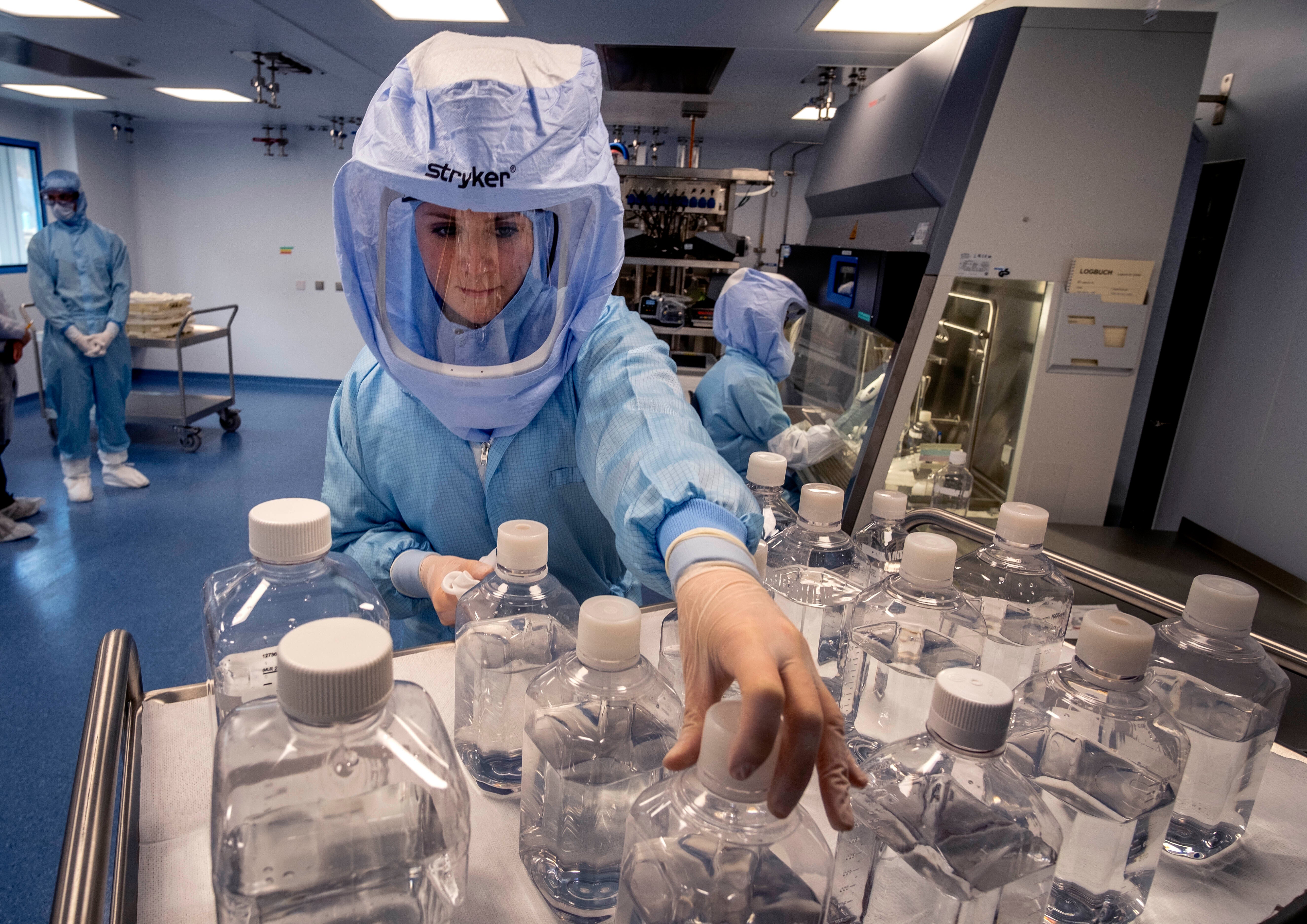Amid AstraZeneca setback, Germany banks on homegrown vaccine
A German company is gearing up for mass production of its groundbreaking COVID-19 vaccine

Your support helps us to tell the story
From reproductive rights to climate change to Big Tech, The Independent is on the ground when the story is developing. Whether it's investigating the financials of Elon Musk's pro-Trump PAC or producing our latest documentary, 'The A Word', which shines a light on the American women fighting for reproductive rights, we know how important it is to parse out the facts from the messaging.
At such a critical moment in US history, we need reporters on the ground. Your donation allows us to keep sending journalists to speak to both sides of the story.
The Independent is trusted by Americans across the entire political spectrum. And unlike many other quality news outlets, we choose not to lock Americans out of our reporting and analysis with paywalls. We believe quality journalism should be available to everyone, paid for by those who can afford it.
Your support makes all the difference.As Germany ponders how to accelerate its sluggish coronavirus vaccination campaign after yet another hitch involving the AstraZeneca shot, a production facility in the historic pharmaceutical center of Marburg may hold part of the answer to reliable supply in the months and years ahead.
BioNTech the German company that developed the first widely used vaccine together with U.S. partner Pfizer is busily starting up a production facility that it says can produce up to a billion doses this year alone. That estimate was raised from the original hopes for 700 million.
The company, which had never brought a pharmaceutical product to market before, wowed the world last year when it got authorization to sell a completely new type of vaccine in Britain, the United States and Europe — three highly regulated markets for medical products.
The active ingredient in the shot is messenger RNA or mRNA, which contains the instructions for human cells to construct a harmless piece of the coronavirus called the spike protein. The human immune system recognizes the spike protein as foreign, allowing it to mount a response against the virus upon infection.
Scientists have known how to make mRNA for some time, but not for commercial mass production.
“This is what makes it exciting from a scientific perspective, but also from a manufacturing perspective, to do it on such a large scale, in such a short period of time,” said Valeska Skilling, head of production at the plant.
BioNTech only received approval Friday from the European Medicines Agency for the manufacture of the vaccine at the Marburg site, which was bought from Novartis last year. The site is located within a pharma industry cluster whose roots go back more than a century to Nobel Prize winner Emil von Behring, who developed the antitoxin for diptheria and tetanus.
Globally, BioNTech and Pfizer now estimate they can manufacture 2.5 billion doses in 2021, half a billion more than forecast in February.
To make that happen, some 400 employees are confronting the challenges of large-scale production involving around 50,000 separate steps, some of which require months of training. A crucial concern in handling mRNA, which is notoriously fragile, is rigorously avoiding outside contamination. Workers, who typically have degrees in disciplines such as biology or pharmacy, must wear two protective suits, boots and full-head coverings that take 20 minutes to put on.
Last week the company showed journalists some of the production equipment, including the bioreactor, a metal drum where the mRNA is produced from raw material fed in by tubes and carefully monitored. One batch can contain enough mRNA for 8 million doses in a bag not much bigger than a large sack of rice. It is then filtered and combined with lipids, or fatty molecules, that form tiny particles which encapsulate the mRNA and protect it after injection into the human body. The final step is filling the vials, carried out by external partners.
The German government has come under heavy fire at home for letting the European Union handle the procurement of vaccines, resulting in a far more limited supply than that obtained by Britain or the United States. The safety and supply troubles with another vaccine, made by British-Swedish company AstraZeneca, has further highlighted how reliant the EU is on research and manufacturing outside the bloc.
Stung by the criticism, and conscious of Germany's upcoming national election, Berlin has thrown its weight behind the Marburg plant, helping push the necessary paperwork through the German bureaucracy.
Christoph Krupp, the government's vaccine production czar, said companies are ramping up their capacity, buying new equipment and hiring more staff. Meanwhile, the government is trying to reassure them that those investments aren't going to go to waste.
“We want to prepare ourselves to maintain the production structures that we are building up now in the medium term, because we do not know how the pandemic is evolving,” Krupp said. “We do not know how the virus mutates... we do not know if there will be another pandemic.”
In an interview with the Frankfurter Allgemeine Zeitung daily, Krupp said this will require some level of state aid, and that the government is considering a vaccine production reserve of 500 million doses per quarter, or about 2 billion a year.
In practice that means another one or two plants like the one in Marburg will be needed in the European Union. While these would likely prioritize orders placed by the bloc, there is no outright export ban on vaccines from the EU, meaning other regions could benefit too.
The government may be hoping that its investment will pay off. According to economists cited by Germany’s ifo-Institute, having a vaccine available at short notice could result in a net benefit for each German of up to $1,750 a year.
___
Jordans reported from Berlin.
___
Follow all of AP’s pandemic coverage at https://apnews.com/hub/coronavirus-pandemic, https://apnews.com/hub/coronavirus-vaccine and https://apnews.com/UnderstandingtheOutbreak
.